People
‘We Have to Create a Common Future’: The Head of Berlin’s Humboldt Forum on Its Long-Awaited Opening and the Future of Restitution
Hartmut Dorgerloh sat down with Artnet News ahead of opening of the controversial Humboldt Forum.
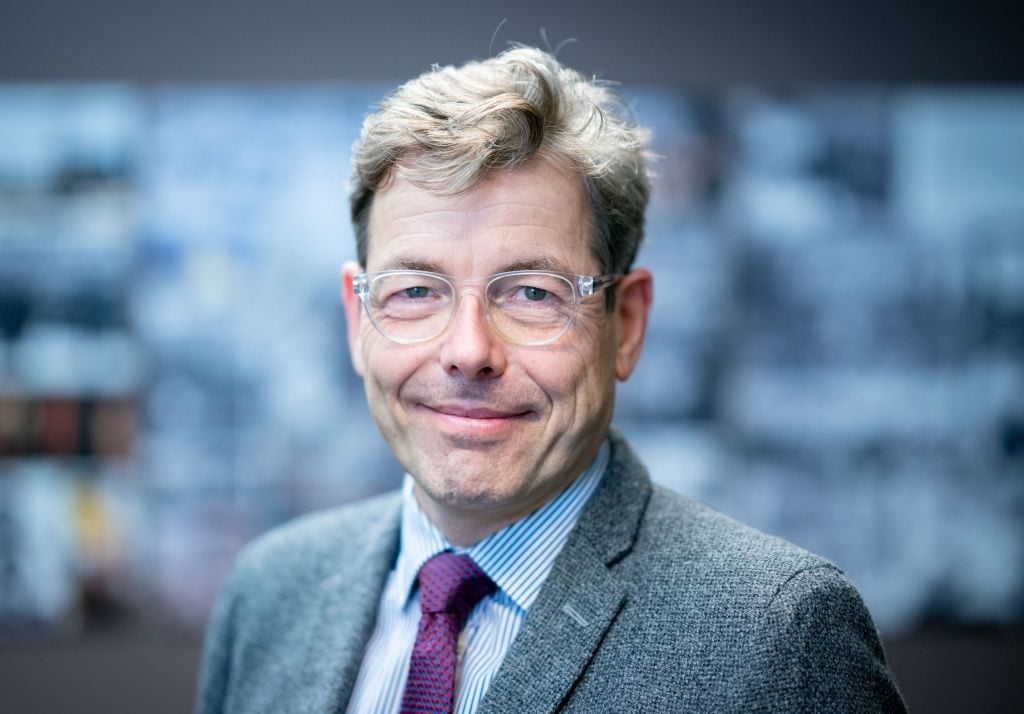
Hartmut Dorgerloh sat down with Artnet News ahead of opening of the controversial Humboldt Forum.

Kate Brown

Berlin’s hugely ambitious and increasingly controversial cultural project the Hulmboldt Forum is finally complete.
It will open digitally on Wednesday in the reconstructed Berlin Palace, the Baroque-style institution which cost €677 million ($820 million) to complete and covers an area of more than 320,000 square feet. The building is home to four distinct but collaborating partners: the Berlin State Museums together with Berlin Kulturprojekte, which are managing locally focused exhibitions; the Humboldt University; the Humboldt Forum Foundation; and the Prussian Cultural Heritage Foundation, which oversees the ethnographic and Asian art collections.
Ahead of its opening, we spoke with the general director of the Humboldt Forum, Hartmut Dorgerloh, about the multi-faceted project, including some of the pain points and growing frustration with Germany’s handling of its colonial past,
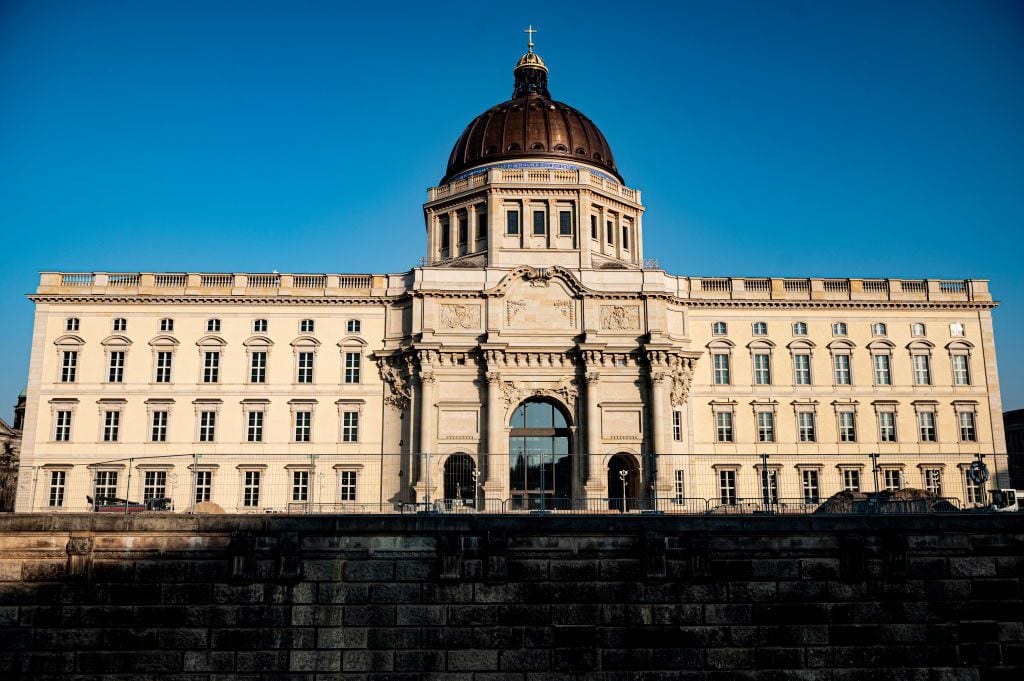
The Humboldt Forum. Photo: Fabian Sommer/dpa via Getty Images.
How are you feeling about the opening going digital only?
It is a mixture of feelings. There are some good feelings—we are ready now for takeoff. There is a bitter feeling as well, because we cannot welcome visitors in a building that is dedicated to the people, dedicated to a broad audience. But we have to wait, like all the other cultural institutions.
Why is important to you to distinguish Humboldt Forum from a museum?
We are not a museum. We want to curate a program that is designed on three pillars. One is cultural activities, so programs that include theater, literature, film, and the performative arts. Film will play a very important role as moving images are so important to our imagination of the world, which has been true for the last 100 years. We plan to look back through film productions through history, up until today. You cannot imagine political movements without video. The starting point of this year’s Black Lives Matter movements was a video clip.
The second pillar is education. This is a place for learning, teaching, and sharing experiences. It is not by accident that the first special exhibition is dedicated to children. The third pillar is museum exhibitions. But this is only one part of it.
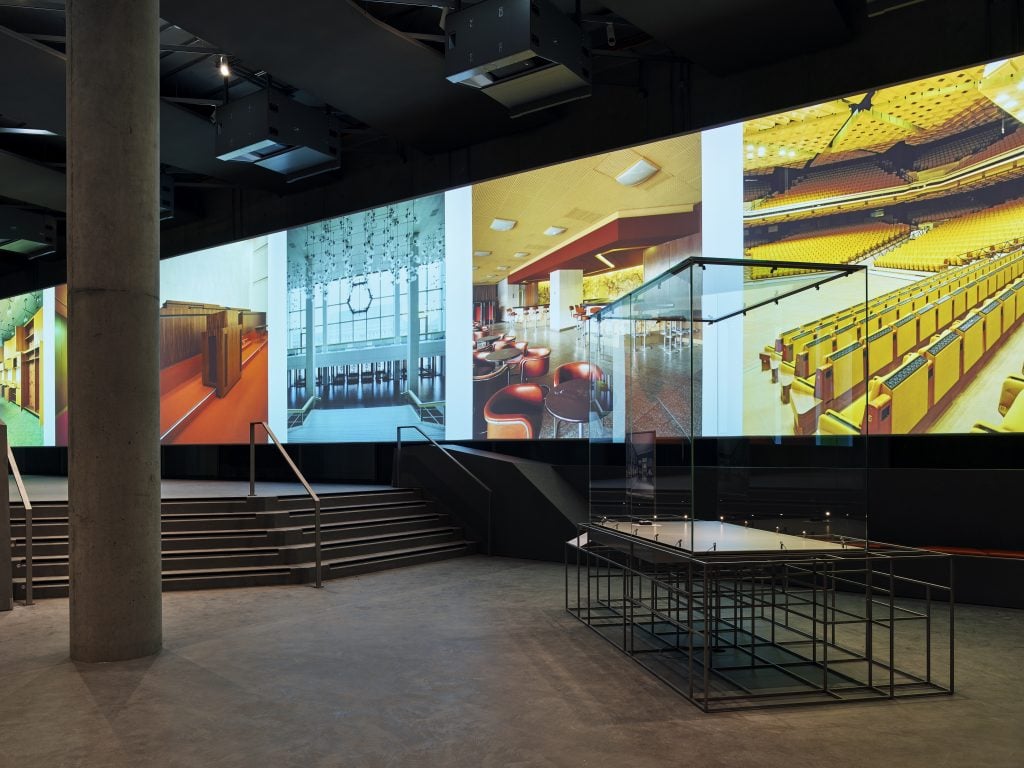
Humboldt Forum’s Video Panorama by chezweitz, Photo © SHF/Alexander Schippel
The Humboldt Forum faces a lot of criticism. Does it frustrate you the positive elements within the program do not get more attention?
It is such a prominent place. There are a lot of controversies around it. I think it is good, and we want to continue with this. We need open spaces for open debates—and that is something that we need even more now than we did five or 10 years ago. We need social cohesion. I think we have to find a way to survive and create a common future. Perhaps Humboldt Forum can contribute a little bit.
A lot has changed since the concept for this institution came to be. You’re opening in a year where critical conversations around colonialism and racism have reached a fever pitch. Has the Humboldt Forum adapted itself to these times?
I think it is more obvious than before why we need such a place—a place full of contrasts that reflects the contradictions within our society. We need a site where you can celebrate diversity on the one side and, on the other side, look at how we may keep social cohesion.
It is a great challenge for everyone involved. Managing such a large site requires a whole new working principle, since we are not only one voice but four participants here, each with different perspectives and positions. We are coming together and creating an open space for new experiences. This is something new, and we will see how this works with our visitors and our partners worldwide.
Our most important self-description, though, is the “forum.” It is like a market square, where people can meet, talk, watch, see, and buy. This is a new concept from when the reconstruction of the Berlin palace was decided more than 20 years ago. The world was quite different then. Colonialism was not so much of a focus in the public discussion as it is now.
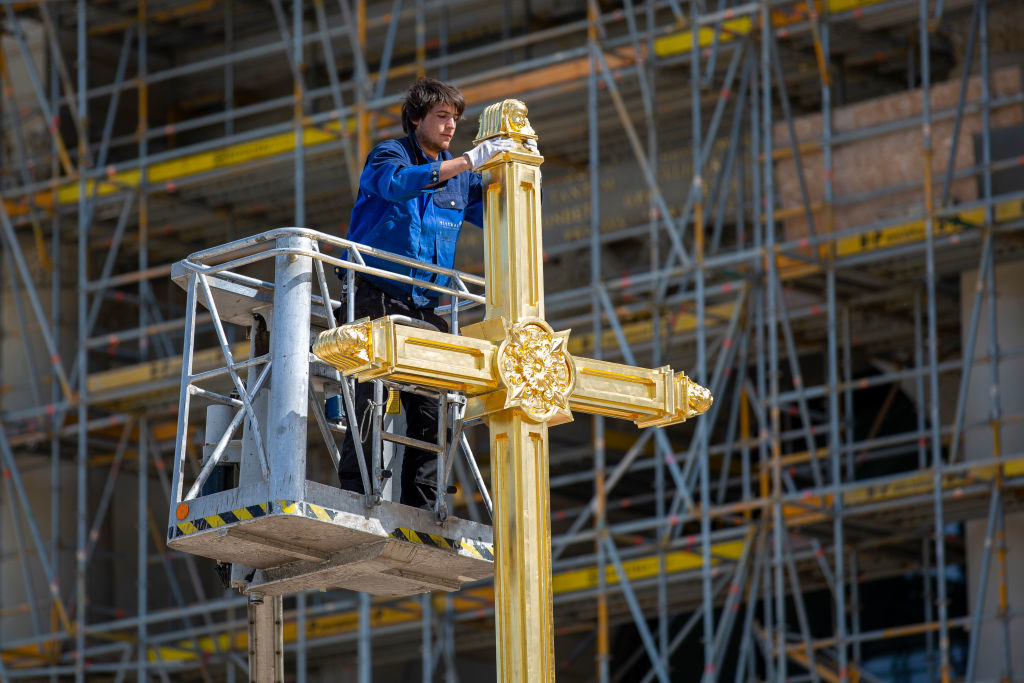
The cross being lifted atop the Humboldt Forum in Berlin. Photo: Bernd von Jutrczenka/dpa via Getty Images.
Is the Humboldt Forum foundation open to the restitution of the Benin Bronzes? The Nigerian embassy sent a formal letter to the German government requesting them in 2019. How has this been addressed by the Humboldt Forum?
The historical works of art from the Benin Kingdom in the Humboldt Forum are part of the collections of the Ethnology Museum of the Berlin State Museums, which are run by the Prussian Cultural Foundation. Any question on restitution, and I expect there will be, are in their responsibility.
In what capacity will the bronzes be displayed at the Humboldt Forum? What kind of information about their provenance will be included?
For us at the Humboldt Forum Foundation, it is particularly important that all partners in the house clearly and unambiguously state the provenance of their exhibits. Of course, this is especially true for problematic stocks like the Benin bronzes. Around 260 objects from Benin will be presented in the exhibition. How they came to Berlin, including the invasion and plunder of the Benin kingdom at the hands of British troops in 1897, is a central theme of the presentation. There will be a series of interviews on a large multimedia wall that will simultaneously narrate the various positions and aspects of the history and future of these important works of art, including representatives of the Benin royal family. Since this is a dynamic process, the presentation will also change accordingly.
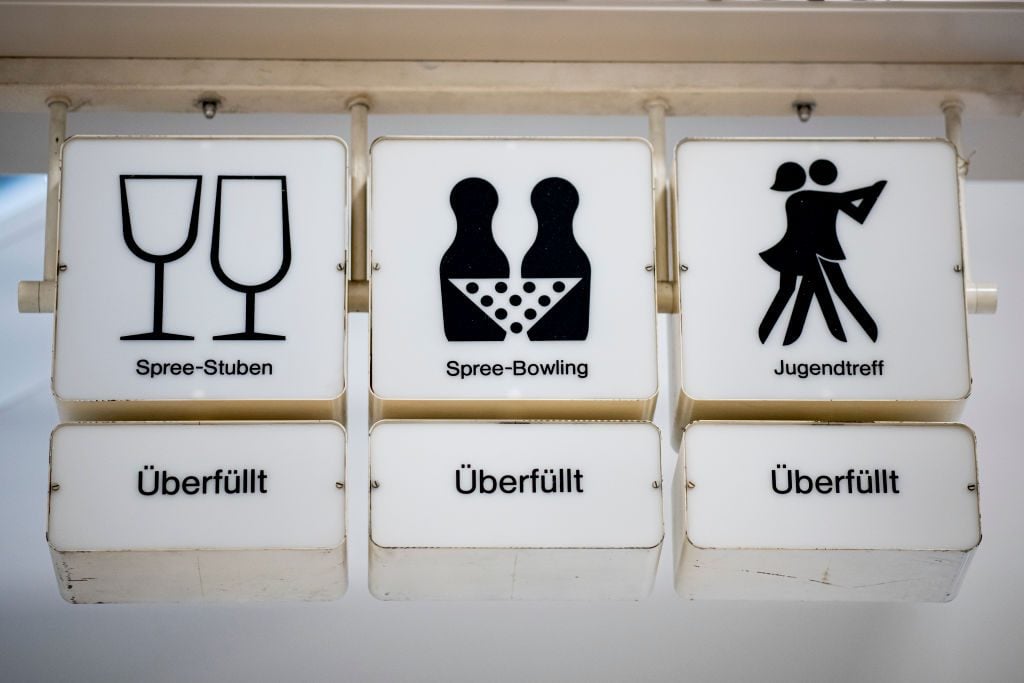
Information boards from the former Palast der Republik, which was torn down. Photo: Fabian Sommer/dpa via Getty Images.
You are East German. How does that affect your understanding of this institution?
I grew up with different school books. We were taught very different things about colonialism. Comparing my education with my colleagues who were educated in the West, and bringing these two perspectives together, is very interesting. When I am talking about colonialism—and reflecting what happened in my childhood—I am beginning at a completely different starting point.
How did you feel to see the former site of the East German parliament, the Palast der Republik, a monumental building from 1975, get destroyed after reunification? The Humboldt Forum is built on that rubble.
My father was a Lutheran pastor who jumped into politics, so I did not have too many good memories of the Palast der Republik, but it was something that I was critical about, and I still am. You cannot kick off your history by tearing a building down. Yet it is interesting that this happened two times here at this same site, with the Prussian palace and then the Palast der Republik.
What are you most looking forward to?
The exhibition “Terribly Beautiful” will be one of our next highlights. It is great example of how to bring perspectives from nature and science together with humanities, together as well with our colleagues from Kenya. We are working with colleagues from the museum side, but also colleagues from NGOs and the World Wildlife Federation. It is a good example of how our ways of thinking and making exhibitions will be completely different—unlike history museums, we want to focus on trans-disciplinarity and intersectionality. And let’s not forget another point: don’t underestimate the visitors.
The Humboldt Forum will open on Wednesday, December 16, online.